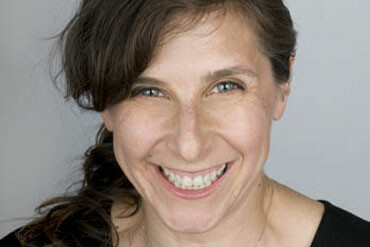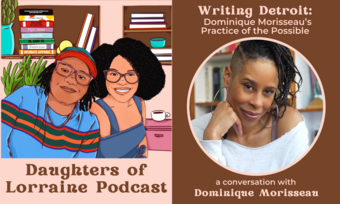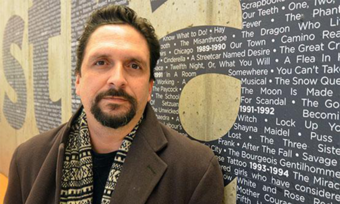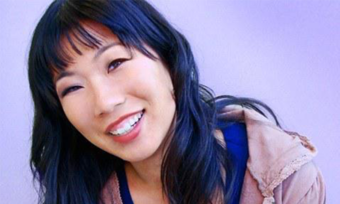Interview with Brooke Berman
Anne García-Romero: Who were your teachers/mentors?
Brooke Berman: Maria Irene Fornes, Marsha Norman, Anne Bogart, Tina Shepard, and Chris Durang. Irene and Marsha were the two biggies though. I studied with them at the same time, which was incredibly useful since they teach very differently. Irene taught me to generate rich first drafts and rewrite in the rehearsal room—she validated much of how I already worked, which is from the intuitive. Marsha taught me how to rewrite, how to think about a play’s structure, how to dissect plays and determine whether the bones are solid. While Irene’s work and teaching methods spoke to my soul, Marsha’s made me a more muscular and more disciplined artist.
Anne: Can you share a brief story about learning from a teacher of yours and/or some words of wisdom that your teacher imparted to you?
Brooke: I was going through a particularly difficult period during my second year at Juilliard in which I felt that no one “got” my work. I’d come from a more experimental tradition—Anne Bogart, Tina Shepard, the Viewpoints, post-modern dance—and the language of psychological realism didn’t work for me. But the more theatrical language I was interested in didn’t work for my peers. Marsha urged me to stick it out. “This is a meditation in difficulty,” she said. “What are you going to do when people don’t like or understand your work? Because this isn’t the last time it’s going to happen.” I learned to build a stronger core and to keep working regardless.
Alice Tuan: In what venues, forums, and contexts have you taught playwriting?
Brooke: All of them! I started teaching in a friend’s loft in 1998—and I’ve been doing it ever since. I’ve taught in traditional academic settings—University of Rochester, Fordham, Eugene Lang, UCSB, as a guest artist at Barnard College and Baruch—and independently. I ran the Playwrights Unit of the MCC Theater Youth Company from 2002-2006 where I taught exceptionally motivated high school students. I worked as a guest artist in the public schools through MCC Theater. I currently teach through ESPA, the theater school run through Primary Stages Theater (I have an online class starting in June) and in my living room. But I’m most proud of the “24 With 5” playwriting collective that I helped to create at New Dramatists along with Karen Hartman, Dominick Taylor, Jorge Cortiñas, Lisa D’Amour, Liz Duffy Adams, and Lynn Nottage. We ran month-long workshops in which students would study with all of us and receive feedback and guidance as well as a creative community. I taught a unit in writing site-specific work.
Alice: What are we training playwrights to do and who are we training playwrights to be?
Brooke: We’re training playwrights to be whoever they want to be. It’s not up to us to determine who they are. We’re giving them a set of tools and strategies, ways to access their own creative process, and their own particular genius. It’s not up to us what they write or how they write or in what form. And they know more than we do about how the form is evolving. So we can only impart what we know—how to get the juices flowing, how to drop into the imagination, how to be true to one’s unique voice and content, how to rewrite until the play is at its fighting weight, and how to keep evolving as artists. Then, they’ll be strong. They can find their way. They can invent new ways. They can work.
“What are you going to do when people don’t like or understand your work? Because this isn’t the last time it’s going to happen.” I learned to build a stronger core and to keep working regardless.
Alice: Some of our students choose not to continue on to professional playwriting careers. What might be other professions that utilize playwriting skills and what might be some examples?
Brooke: I can’t think of a single field that wouldn’t be enhanced by employing a person who had studied playwriting. Someone schooled in the dramatic arts has learned creative process and structure and, most key, compassion for one’s fellows. What are we doing as storytellers if not engendering compassion?
Anne: What are the deeper benefits of exploring drama writing and its forms and how do they help us understand, articulate, unpack a more and more complex, technological world?
Brooke: What else do we have if not our stories and our ability to imagine the lives and stories of others?
Alice: Can scripting transculturation and the performance of it deepen our democratic promise?
Brooke: The human experience is the human experience. And the more voices that articulate the ins and outs of that experience, the better. I think of Audre Lord’s essay about the uses of the erotic—if we’re awakening our audiences, helping them to find their own deeper feelings, then we’re doing our jobs. How can an awakened audience not go out into the world and deepen democratic promise?
Anne: Can you share one writing exercise or classroom approach that is fundamental for you in establishing a space for your students to create new works for the theater?
Brooke: I rely on Maria Irene Fornes’s visualization exercises; they’re the backbone of everything I teach. I try, as she did, to teach students how to access the character’s voice and move away from whatever agenda they may have for that character. I encourage them to let the writing lead the way:
- Close your eyes and see a character. This may be a character you’ve been working with for some time, or it may be someone entirely new. Let this person in. See them, really see them—let them be unmasked. If it’s a character you’ve already been working with, he or she may appear differently to you today. And if that’s the case, trust that. Now, take a really good, thorough look. Notice how tall this person is. Look at the mass of his or her body in space. See the shape of the head, the color of the hair, the texture of the hair, the way the head sits on top of the neck. Look at the neck and shoulders, see if you can feel where this person holds tension in their body. Look at their chest and arms and torso. Look at the way the torso sits on top of the legs. Look at what this person is wearing and how their clothes fit—examine their feet, the shape of the feet, the kind of shoes they wear, whether the shoes are clean or dirty or tracking mud. Look at their hands—are the hands lined or smooth? Look at the insides of their palms, their fingernails, and fingers. See whether or not they’re holding anything in these hands. This character has a message for you. There is something he or she wants you to know. S/he says, “There are things about me that you don’t know, things I’m yearning to tell you…” Keep writing.
- And then, from time to time, I gently interrupt the writing with prompts. Like Irene, I take these prompts from a nearby book, usually fiction or poetry. And I give students the option of taking the prompts and weaving them in or ignoring them entirely.
- After about twenty to twenty-five minutes of writing, we stop and read the exercises aloud and I pull resonant imagery from the work. Anything that catches my ear. And I ask students to write those images down and keep exploring them.













Comments
The article is just the start of the conversation—we want to know what you think about this subject, too! HowlRound is a space for knowledge-sharing, and we welcome spirited, thoughtful, and on-topic dialogue. Find our full comments policy here